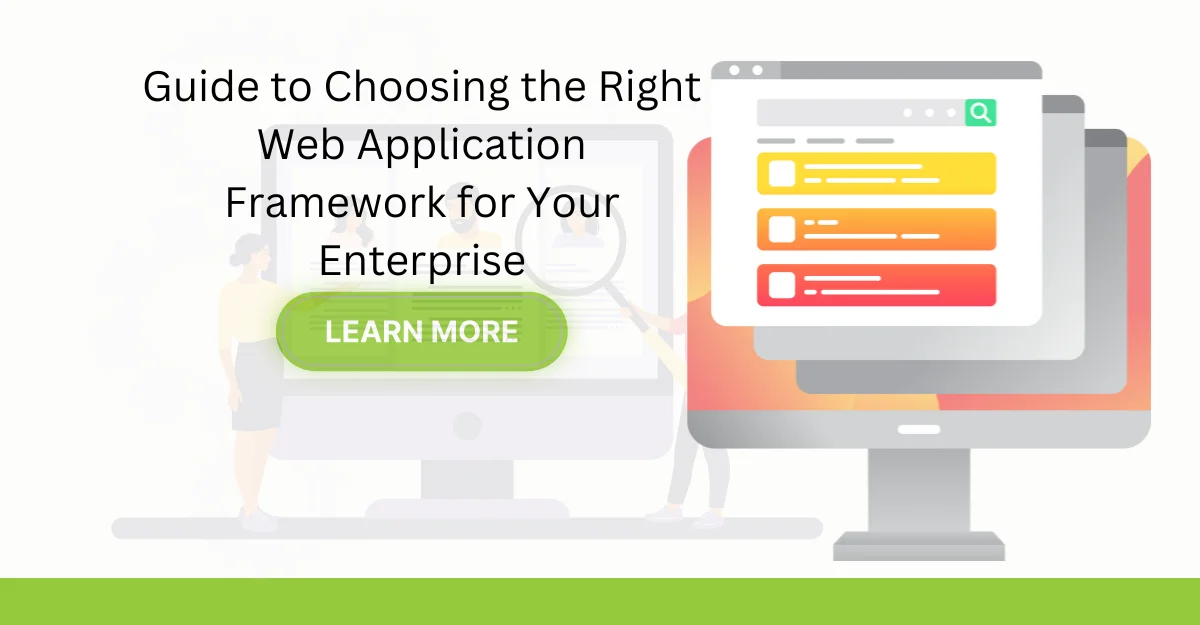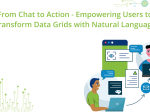Choose the Right Web Application Development Framework

Are you finding it hard to choose the right web application development framework for your business? The frameworks you pick will affect how your app will work, how long it will take to be developed, and how secure it is. One of the best frameworks is Ext JS, which is Extended JavaScript.
One of the best frameworks is Ext JS, which is Extended JavaScript. Ext JS is a powerful tool for rapid web application development, enabling developers to build robust, scalable apps faster with less repetitive coding.
For team collaboration and rapid development, choose frameworks like Ext JS, React, or Angular that provide reusable components, clear architecture, and robust tooling to streamline teamwork and accelerate project delivery.
We’ll be discussing the basics of web applications in the following guide, including their uses and types. We’ll also explain two main categories of frameworks: front-end and backend. You’ll learn about popular frameworks like Ext JS, AngularJS, ReactJS, Vue.js, and jQuery. We’ll elaborate on how each of these can help your web application stand out. Knowing how to choose a software development platform helps businesses pick the right tools and frameworks to build secure, scalable, and high-performing web applications efficiently.
Modern mobile app RAD tools like Rapid Ext JS empower developers to build cross-platform, high-performance mobile applications faster through visual interfaces and reusable UI components.
We’ll also examine which factors to consider when choosing a framework, including ease of use, performance, security, scalability, and development speed. Whether you’re trying to build applications for a small business or an enterprise-level one, selecting the best framework for web application development is key to success.
What is a Web Application Development Framework?
Web Application development has made developing web applications easier and faster. It gives developers an organized set of resources and instructions to expedite the process and lower error rates. With the help of these tools, developers can instead focus on the unique aspects of their apps rather than starting from scratch.
These frameworks can handle the repetitive and essential tasks very well, such as:
- Routing web addresses
- Connecting to databases
- Managing user sessions
- Ensuring security
Both traditional web application and mobile application development require this kind of efficiency. Some of the most widely used web frameworks include Ext JS, Django, Ruby on Rails, and Laravel. Each one is designed to work with specific programming languages and offers distinct capabilities.
With the use of rapid web application development frameworks, developers can reduce the lines of code, establish clean architecture, and promote high maintainability. This is especially important when offering custom web application development services. Where reliability, scalability, and time-to-market are key business drivers. By leveraging the right tools and frameworks like Ext JS, businesses can accelerate custom web application development while ensuring scalability, performance, and security.
Types of Frameworks: Frontend and Backend Web frameworks
Web frameworks are generally categorized as frontend and backend. Both of these are crucial for developing a fully functional web application.
Frontend Web Application Development Framework
Frontend frameworks handle the part of the web application that the users directly interact with, that is, the client side of the framework. It includes the following:
- Designing user interfaces
- Enhancing user experience
- Building reusable UI components
- Managing animations, layout, and performance
Frontend frameworks mostly stick to HTML, CSS, and JavaScript. A lot of them use component-based architecture that makes code reusable and concise. That’s a big reason they work so well for progressive web apps that need to run smoothly on any screen. Startups that need to move fast and scale efficiently often turn to low code web app development, leveraging platforms like Rapid Ext JS to build robust applications without extensive coding.
Examples of popular frontend frameworks include:
- Ext JS
- React
- Angular
- Vue.js
These tools are frequently used by web and application development companies to create fast, secure, and engaging frontends.
Backend Web Application Development Framework
Backend frameworks handle everything that users do not directly interact with, that is, the ‘server side’ of the framework, such as:
- Database interactions
- API development
- User authentication
- URL routing
- Server configuration
- Logic execution
- Security protocols
Popular backend web application development frameworks include:
- Ruby on Rails
- Django
- Express
- Spring
- ASP.NET.
Many web application development services rely on robust backend tools to ensure the application runs efficiently, even under heavy traffic.
Main Use of Web Application Frameworks
Web application frameworks handle the common tasks and make the development process easy and fast. They help teams work together more smoothly and keep the code organized and clean. They also work well with cloud services, which is useful for modern app development.
The main use of web application frameworks is to smooth and speed up the process. A good web application development framework enables developers to:
- Reduce development time
- Simplify coding tasks
- Improve collaboration between teams
- Maintain high code quality
- Scale projects easily
Whether you are offering custom web application development services or managing in-house projects, the right framework enhances productivity, security, and long-term scalability.
These frameworks also support integration with cloud platforms, which helps businesses develop cloud computing applications more efficiently.
Also Read: Top Low-Code Platforms for Rapid Web App Development
Popular Web Application Development Frameworks
The following web application frameworks are used by the development teams:
Ext JS
Ext JS is a powerful framework for building cross-platform mobile and web applications. Whether you’re building dynamic dashboards or single-page apps, Ext JS, as the most popular web application framework, provides everything you need.
Key Features:
- 140+ readily usable components (such as forms, charts, and grids)
- Built-in themes (Classic, Neptune)
- Responsive design across devices
- Data package for efficient data handling
- Drag-and-drop support
- Gesture support
- Rich layout system
Use Cases:
Applications with high performance and complex user interfaces are best suited to it. Businesses use it extensively to customize applications.
Editions: Enterprise (with more features), Pro, and Community (free), Limitless (for extensive licensing)
Ext JS is one of the greatest frameworks for creating online apps, particularly those with a lot of data.
AngularJS
AngularJS is a client-side framework developed by Google that is mostly used for single-page applications (SPA). It uses declarative programming and HTML-based templates.
Why Use AngularJS:
- Two-way data binding
- Dependency injection
- Powerful directives
- Extensive testing support
- Popular Projects Using AngularJS:
- IBM
- Upwork
- PayPal
- Forbes
It is frequently the preferred solution for custom web application development companies creating enterprise-grade platforms.
ReactJS
ReactJS, invented by Facebook, takes a declarative approach to UI development. It is distinguished by its component-based architecture and virtual DOM, which enhances performance.
Advantages of ReactJS:
- Virtual DOM for fast rendering
- Reusable components
- Easy integration with other libraries
- Strong community support
- Popular Projects Using ReactJS:
- Netflix
- Salesforce
- Asana
React is a favorite for progressive web application development and offers flexibility for creating complex frontends.
Vue.js
Vue.js is a progressive framework that focuses on the view layer. It is lightweight, quick to learn, and suitable for creating both simple and complicated user interfaces.
Why Vue.js:
- Simple integration
- Lightweight and fast
- Component-based structure
- Reactive data binding
- Popular Projects Using Vue.js:
- Behance
- Nintendo
- Wizzair
- 9GAG
Vue is popular among web application development companies that value flexibility and developer experience.
jQuery
jQuery is a lightweight JavaScript toolkit that makes it easier to manipulate the document object, perform animations, and handle events.
Why Developers Love jQuery:
- Fast to implement
- Cross-browser compatibility
- Wide plugin ecosystem
- Minimal learning curve
Although it is not a complete web application development framework, jQuery is nonetheless quite useful for improving legacy and simple online applications.
Choosing a Web Development Framework
Choosing the best web and application development framework is about more than just popularity. Consider the following elements while determining the best choice for your project:
Ease of Use
Look for frameworks with clear documentation, tutorials, and a gentle learning curve. This is especially crucial for startups and teams developing mobile applications or moving to new technology stacks, including when selecting a progressive web application framework.
Scalability
The framework will help your application’s future expansion. This is critical for enterprise application development to examine how well it handles new features, user load, and data volume.
Performance
Make use of real-world case studies and performance measures. If you’re building with a progressive web application framework in mind, pick the quickest framework without compromising functionality or reliability.
Security
Prioritize frameworks with built-in security features. This protects your apps from attacks such as XSS, SQL injection, and CSRF, which is critical for any bespoke web application development service.
Development Speed
To make programming easier, look for tools that offer pre-built modules, reusable components, and CLIs (command-line interfaces). The best frameworks offer quick web application development and frequently satisfy the requirements of progressive web application frameworks.
Community and Support
Strong support from the community leads to improved documentation, faster problem-solving fixes, and a wide range of third-party tools. This is especially true when comparing the best Java web application frameworks or selecting the best Java framework for web applications.
Licensing and Costs
While many frameworks are open-source, enterprise-grade features or integrations may require licensing. Always consider licensing conditions and hidden charges, especially when preparing for long-term bespoke web application development services.
Java Web Application Framework Comparison
If you’re focused on Java, it’s important to know the best Java web application frameworks and how they differ:
| Framework | Best Use Case | Strengths | Limitations |
|---|---|---|---|
| Spring | Enterprise apps | Modular, secure | Steep learning curve |
| JSF | Enterprise UIs | Built-in Java EE support | Limited community |
| Struts | Web apps | Robust, structured | Outdated compared to modern tools |
| Grails | Rapid development | Groovy support | Less popular today |
Your selection should depend on your specific project needs, developer expertise, and performance expectations. Use a detailed Java web application framework comparison to guide your decision and find the best Java framework for web applications.
Conclusion
Choosing the right online and mobile application development framework is one of the most essential decisions you can make for your project’s success. It affects the app’s scalability, security, and development speed in addition to its performance.
We looked at frameworks such as Ext JS, React, Angular, Vue.js, and jQuery, as well as backend tools and Java choices. We’ve also provided crucial criteria to help you analyze and select the greatest fit.
Whether you’re partnering with a web and application development company or building in-house, always keep performance, scalability, and support in mind. The guide will help you navigate the world of web application development services.
Also Read: 8 Must-Know Tips for Choosing the Right Web Application Framework for Your Project
FAQs
What Exactly Is the Process of Designing and Developing Web Pages?
Web page design and development is the process of building and maintaining websites. It entails creating the layout (UI/UX) and writing code to make the site operational, utilizing web application development frameworks, including those that support a progressive web application framework structure.
Why Does Scalability Matter When Picking a Framework?
When your app is scalable, it can expand without problems. Adding users, features, and enhancements is simple with the correct framework and doesn’t require a complete rewrite.
Can I Change Frameworks After Starting Development?
You can, but it is costly and harmful. Typically, switching requires rewriting a significant portion of the code. Choosing the correct framework early saves time and problems.
How Important Is Framework Support for Development?
Strong support means faster bug fixes, regular updates, and better security. It keeps your app running smoothly, up to date, and easier to manage over time.
How Do I Choose a Framework for a Web Application?
Evaluate the framework’s performance, scalability, documentation, community support, and alignment with your project’s objectives. Choose the finest framework for web application development based on the complexity of your app and the capabilities of your team. This applies when selecting the best Java framework for web applications or a suitable progressive web application framework.
What Are the Benefits of Using the Right Web Application Development Framework?
The right framework speeds up development, reduces bugs, improves scalability, and simplifies maintenance. It also ensures better performance, security, and long-term adaptability for your web applications.
How Long Does It Take to Build a Web App?
The time required for development varies. A simple web app could take between one and three months to develop. Complex custom web application development projects could take 6–12 months or more, depending on the features and integrations.
What Are the Challenges of Enterprise Application Development?
Scalability, maintaining massive databases, establishing effective security, managing different teams, and selecting the correct web application development framework are all obstacles to long-term success.
How Will AI Change Software Development and Applications?
AI is revolutionizing software development by automating coding, enhancing testing, improving user personalization, and speeding up application development cycles with AI-driven design and decision-making tools.
How to Create a Cloud Computing Application?
To create a cloud-based app, select a cloud provider (AWS, Azure, or Google Cloud). An appropriate web application development service, a scalable backend, and APIs for cloud storage, authentication, and analytics.
Sign up for free at Sencha to try Ext JS to build amazing web applications.

The integration of LLMs into web applications has largely focused on content generation and chatbots.…

ReExt is a React library developed by Sencha that allows you to use Ext JS…

Upgrading large-scale applications built with Ext JS often presents significant challenges for development teams. This…









